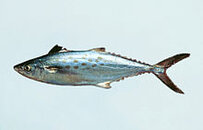During a DEMA show in Orlando, a dive shop owner friend of mine got us tickets to dive Disney's The Living Seas. In order to help maintain a stable environment for the fish diver must wear the equipment Disney provides. When I dove it they used split fins. I tried doing the frog kick, the modified frog kick, the modified flutter kick, shuffle kicks, helicopter turns and backward kicks and the performance of split fins was sub-par compared to ScubaPro Jets. I couldn't backward kick which I can do without fins as well as when wearing paddle fins. I know a girl cave diver who wears splits and can backward kick, but her kick isn't at all pretty as she seemingly forces the fins to obey and reverse.

Disney's use of split fins probably has more to do with who was willing to provide free equipment and pay the most to advertise themselves as the "Proud Sponsor of the Disney Living Seas Exhibit" than any benefit they though they would get "maintaining a stable environment". The issue for Disney is that they don't know where YOUR equipment has been and what sort of contaminants your equipment might carry. They assume you bathe on a regular basis, but not everyone is as meticulous about their equipment as they are about their own personal hygiene. They don't know what sort of parasitic bacteria your gear might be carrying.
---------- Post added May 16th, 2014 at 03:58 PM ----------
Maybe I missed it, but I don't think anyone has said split fins provide more speed for less energy. They don't violate the laws of physics. The way I think of how split fins work, they can provide more speed but only at the cost of requiring more kicks and therefore more energy.
I have used split fins. I have used a couple different models. Basically what I found was that they do require more kicks, but those kicks require less effort. The amount of energy to go from point A to point B in the same amount of time is about the same. I found that I could do timed laps in split fins almost as fast as I could with my Plana Avantis (but not as fast as my long fins), I just had to kick a lot faster, and I used about the same amount of energy. So I don't think they are violating any laws of physics.
BTW, when I took my GUE Fundamentals class, the instructor said it was impossible to do some of the skills with my Plana Avantis. She admitted afterwards that she was wrong, and I passed (Side note, some parts of the Fundamentals course were a bit humbling and I did learn some things - overall, a valuable experience, even for someone as experienced as I thought I was at the time). And the one guy who used split fins WAS able to do all the kicks except kicking backwards. The instructor loaned him a set of jet fins and he was able to kick backwards very well. He switched to jet fins immediately following the class. Me, I've had the same pair of Avanti's for 17 years now.
The other issue I'd like to address has to do with the silting issue. We tried a test in our local silty watering hole. I'm not going to claim that a flutter kick with paddle fins doesn't kick up silt, but we performed a test with divers passing over a silty area about six feet off the bottom. With jet fins and my Avanti's, you'd occasionally see a tuft of silt pop up beneath a down stroke. With the split fins and the increased number of kicks to cover the same distance, there was a virtual silt-smoke trail on the bottom behind the diver.
But I would not bash anyone who wanted to dive with them. Some people just don't have the legs for a good paddle fin. And i admit, mine do cause me to cramp up every once and a while.




